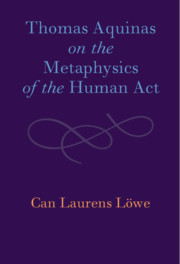Book contents
- Thomas Aquinas on the Metaphysics of the Human Act
- Thomas Aquinas on the Metaphysics of the Human Act
- Copyright page
- Dedication
- Contents
- Figures and Tables
- Acknowledgments
- Abbreviations
- Introduction
- Part I The General Framework
- Part II Choice Hylomorphism
- Part III Act Hylomorphism
- Chapter 6 The Hylomorphic Structure of the Human Act
- Chapter 7 The Ontology of Bodily Human Acts
- Chapter 8 The Ontology of Mental Human Acts
- Chapter 9 Aquinas’s Act Hylomorphism Today
- Appendix Judgment and Composition and Division
- Bibliography
- Index
Chapter 7 - The Ontology of Bodily Human Acts
from Part III - Act Hylomorphism
Published online by Cambridge University Press: 25 June 2021
- Thomas Aquinas on the Metaphysics of the Human Act
- Thomas Aquinas on the Metaphysics of the Human Act
- Copyright page
- Dedication
- Contents
- Figures and Tables
- Acknowledgments
- Abbreviations
- Introduction
- Part I The General Framework
- Part II Choice Hylomorphism
- Part III Act Hylomorphism
- Chapter 6 The Hylomorphic Structure of the Human Act
- Chapter 7 The Ontology of Bodily Human Acts
- Chapter 8 The Ontology of Mental Human Acts
- Chapter 9 Aquinas’s Act Hylomorphism Today
- Appendix Judgment and Composition and Division
- Bibliography
- Index
Summary
This chapter applies the general hylomorphic theory of the human act to one of the two kinds of human acts that Aquinas countenances, namely, bodily human acts. In keeping with the general hylomorphic framework, it argues that a bodily human act is a composite of a volitional act of use and a bodily commanded act. This chapter investigates each of these two components and considers how they form one unified human act. It argues that while use is an immanent act, any bodily commanded is traunseunt. That is to say, use remains in the agent, while the bodily commanded act, which is an exercise of the “motive power” (vis motiva), comes to inhere in a patient external to the human body. What is more, it argues that use is an intrinsically instantaneous act, whereas any bodily commanded act takes time to be completed. On this basis, it concludes that use and the bodily commanded act are inherentially as well as durationally heterogeneous. The last section of the chapter examines whether this dual heterogeneity prevents use and the bodily commanded act from constituting a unified hylomorphic whole. It argue that this is not the case.
Keywords
- Type
- Chapter
- Information
- Thomas Aquinas on the Metaphysics of the Human Act , pp. 147 - 177Publisher: Cambridge University PressPrint publication year: 2021

